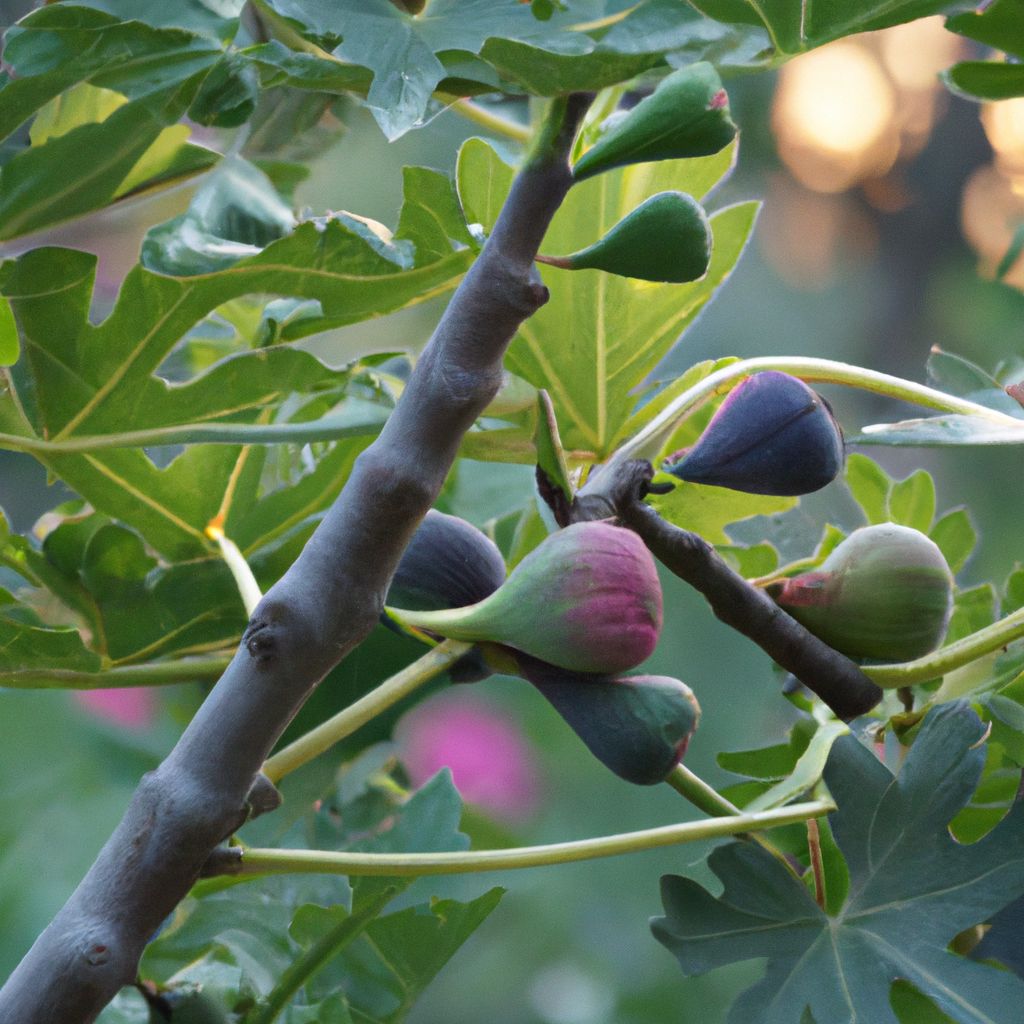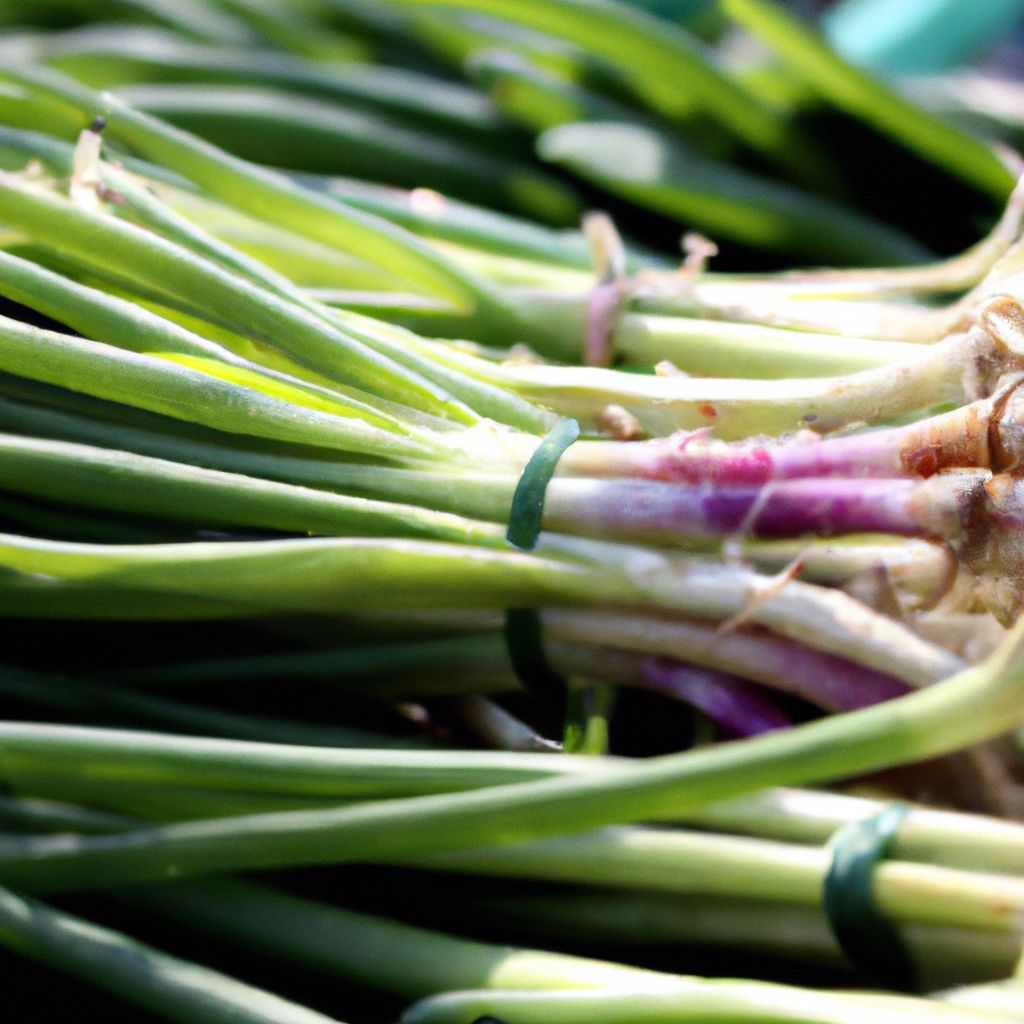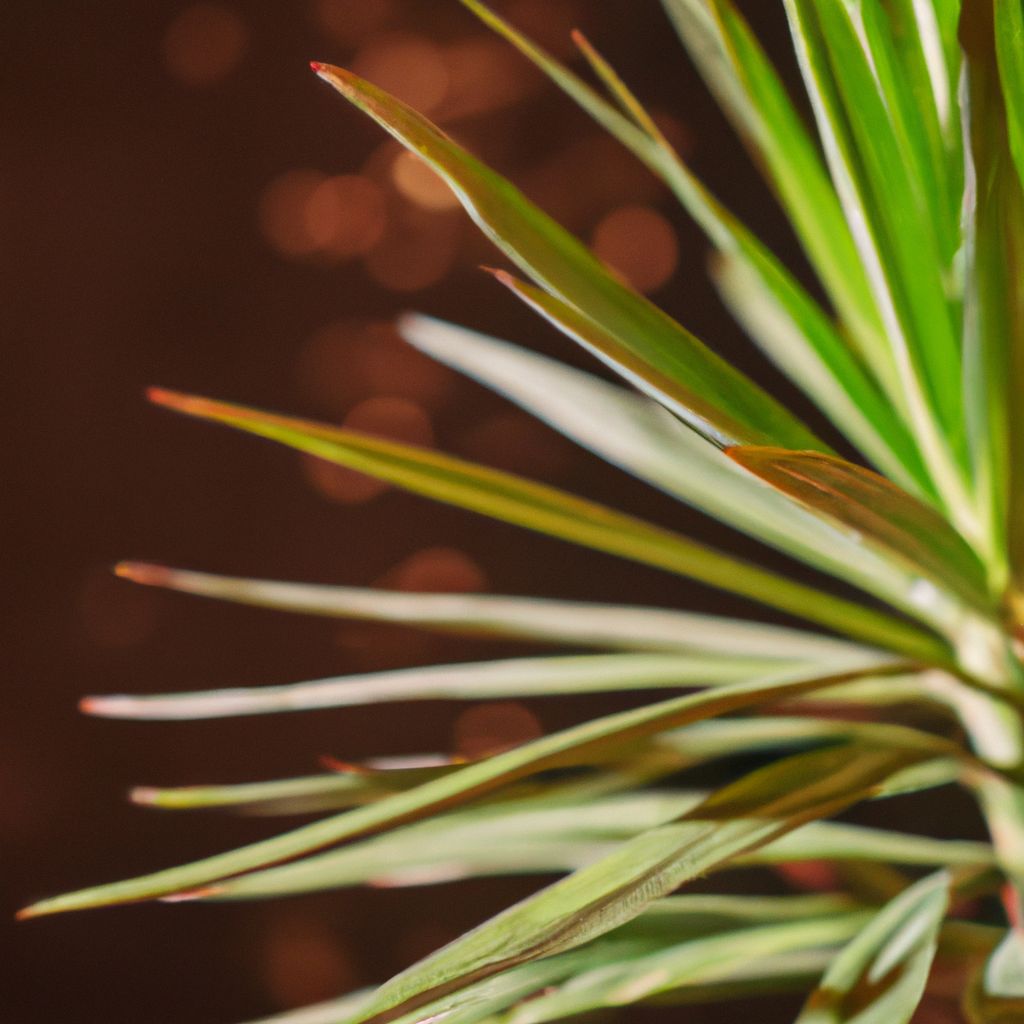Cultivating fig trees at home brings the delightful rewards of fresh, ripe fruits straight from your backyard. Biting into a juicy fig still warm from the summer sun offers a taste that store-bought figs simply can’t match. Along with enjoying their luscious flavor, you’ll also reap the benefits of cost savings, an enjoyable gardening experience, and a bountiful harvest ideal for preserving. With some preparation and regular care, it’s easy to grow productive fig trees well-suited to your climate and space.
Why Grow Figs at Home?
Nothing compares to sinking your teeth into a ripe, honey-sweet fig plucked fresh from your own tree. Homegrown figs offer memorable flavor and texture at the peak of freshness. Here are some of the top reasons to try growing figs for yourself:
Enjoy Optimal Flavor and Texture
- The rich, succulent flesh of a fresh fig delivers a burst of sweetness with every bite. Their texture when fully ripe is tender and melting.
- Figs are often described as tasting like a cross between strawberries, pears, and honey. The delicate flavor has both fruity and floral notes.
- Depending on the variety, skin and flesh can range from green, brown, purple, black, or yellow.
- Fresh figs can be enjoyed raw for a healthy snack or incorporated into diverse recipes from salads to desserts. Their versatility comes from a complex sweetness that complements both savory and sweet ingredients.
- Drying, canning, or making jam are ways to enjoy figs long after the harvest ends. Preserved figs retain much of their unique flavor.
Significant Savings Over Store-Bought Figs
- One major benefit of growing your own figs is avoiding the steep prices charged for fresh figs at the grocery store. Fig trees produce heavy crops that provide an abundant supply.
- You’ll save on transportation costs by growing figs in your own yard rather than purchasing imports from afar. There’s no need to account for fuel and shipping when your fig tree is steps away.
- Further savings come from eliminating plastic clamshells and other packaging used to ship store-bought figs. Homegrown figs come package-free.
- If your fig tree produces more fruit than you can eat fresh, you can sell or share the surplus to offset your own grocery costs. Some farmers’ markets welcome vendors selling homegrown produce.
- Preserving techniques like drying, canning, and making jam let you enjoy your fig harvest long after the season ends. Storing home-processed figs avoids the expense of buying commercially canned or dried figs.

Discover the Joys of Gardening Through Figs
- For experienced gardeners and novices alike, fig trees offer rewards beyond the edible harvest. The simple act of nurturing any plant and watching it grow can reduce stress and improve your wellbeing.
- Time spent pruning, training, and tending to your fig trees provides an opportunity to slow down and connect with nature. The garden is a calming space to relax and unwind.
- As you gain knowledge specific to fig cultivation, you can take pride in becoming an expert fig grower. Learning the unique needs of fig trees makes the eventual fruit harvest even more meaningful.
- Gardening is a constructive hobby that bears tangible results. Bringing a fig tree to fruiting from a bare-root sapling requires patience and care, but that makes your success more rewarding.
- Share your homegrown figs and gardening experiences with family, friends, and neighbors to foster community connections. Swapping produce, recipes, and growing tips are ways to bond over figs.
Maximize Freshness and Minimize Food Miles
- Unlike figs shipped from commercial orchards, homegrown figs make the quick journey from tree limb to your kitchen in mere moments. There’s no storage and transport time to compromise flavor.
- You control precisely when figs are picked, allowing you to harvest each fruit at perfect ripeness. Commercial fig operations often pick early to allow for transport time.
- If you preserve your own figs by drying, canning, or other methods, you can oversee the entire process from tree to jar for quality results.
- By growing your own food, even on a small scale, you help reduce the distance that produce travels from farm to plate. Homegrown figs travel just yards, not thousands of miles.
- Cultivating your own fruit minimizes contact between your food and unknown hands. You don’t have to wonder who or what touched your food before you purchase it.
Choosing the Best Fig Variety
With hundreds of fig varieties to consider, selecting the right cultivar for your climate and conditions ensures success. Factors like ripening season, cold hardiness, and mature tree size guide this important decision.
Popular Common Fig Varieties
Common fig varieties are fig tree varieties that can be grown reliably in diverse regions. Here are some top picks:
- ‘Brown Turkey’ – This mid-sized, widely adapted fruit has reddish-brown skin and sweet pink flesh. It ripens in mid to late summer.
- ‘Black Mission’ – An heirloom with small to medium purple-black figs that turn jammy red when ripe. Ready for harvest in mid to late summer.
- ‘Celeste’ – One of the most cold-hardy common figs. These small, light brown figs with a pale pink interior have a rich honey-like flavor in early to mid-summer.
- ‘Kadota’ – Green-skinned figs mature to yellow with amber flesh. Their mild, sweet flavor makes them a prime choice for drying. Ripens in mid to late summer.
- ‘Adriatic’ – Prolific large, greenish-yellow figs with pink pulp. Ripe in mid to late summer. Their mild, nutty taste makes them ideal fresh eating figs.
Compact Dwarf Varieties
These miniaturized fig tree varieties are naturally dwarfed for small space gardening:
- Petite Negri – Reliable dwarf reaching 4 to 6 feet tall at maturity. Produces small, deep purple fruits with sweet red flesh.
- Italian Honey – Honey-flavored green figs ripen on a dwarf tree maxing out around 8 feet tall.
- Little Jack – Dense, sweet dark figs on a petite tree that stays under 5 feet tall. Reliably hardy.
- Violette de Bordeaux – Vibrant magenta fruits on a beautiful dwarf tree. Max height around 8 feet.
- LSU Improved Purple – Ripe in mid-season with deep purple fruit and strawberry flesh. Grows up to 8-10 feet tall.
Hardy Varieties for Colder Climates
Gardeners in chillier zones should seek out these cold-tolerant fig cultivars:
- Brown Turkey – Reliable, sweet brown fruits. Withstands temperatures as low as 10°F.
- Celeste – Small, cold-hardy fruiting tree. Often survives winter lows down to 0°F.
- Chicago Hardy – Medium-sized purple fruits. Handles temperatures down to -10°F.
- Violette de Bordeaux – Dwarf tree with vivid reddish-purple fruit. Survives up to -15°F winter cold.
- Verte – Prolific green figs even in cool summers. Tolerates temperatures down to -20°F.
- Northern Illinois – Selected to thrive in the cooler summers of northern climates. Withstands -10°F in winter.
- Marseilles – Pale green figs that tolerate cool weather. Reliable variety for zones 6-9.

Table: Fig Variety Comparison
| Variety | Size | Color | Texture | Taste | Cold Tolerance |
|---|---|---|---|---|---|
| Brown Turkey | Medium-large | Reddish brown skin | Succulent | Sweet, rich flavor | -10°F |
| Black Mission | Small-medium | Dark purple skin, red flesh | Soft, jammy | Sweet, bold | 0°F |
| Celeste | Small-medium | Light brown skin, pink flesh | Juicy | Honey-like | 0°F |
| Verte | Medium | Pale green skin and flesh | Smooth | Mild, creamy | -20°F |
| Petite Negri | Small | Deep purple skin, red flesh | Tender | Sweet, berry notes | Depends on rootstock |
| Violette de Bordeaux | Small | Deep red-purple skin | Silky | Sweet, mild | -15°F |
Ripening and Harvest Seasons
- Early: Mayes Early, Black Ischia, Allegria, Desert King
- Mid: Brown Turkey, Peter’s Honey, Black Mission, Vera, Osborn’s Prolific
- Late: Marseilles, Franciscana, Exodus, Conadria
When choosing varieties, pick ones that ripen at your desired harvest times. Staggered ripeningperiods extend the fig season.
Mature Tree Size
- Standard trees: 15-30 feet tall at maturity. Best for backyards.
- Semi-dwarf trees: 10-15 feet tall when mature. More suitedfor smaller gardens.
- Dwarf trees: 5-10 feet maximum height. Ideal for containers.
Check expected mature heights before planting and prune to restrict spread if needed.
Preparing Soil and Planting Fig Trees
Fig trees thrive in loose, fertile soil with abundant sunlight. Follow these steps when planting your new fig tree:
Pick the Planting Spot
Select a site that receives full sun for at least 6 hours daily. Figs perform best with 8-10 hours of direct sun. For protective winter mulching, pick a spot that allows easy access.
South-facing locations offer warmer conditions and reflect radiant heat off the home’s walls. Avoid shady, low-lying cool areas.
Test and Amend the Soil
Figs prefer slightly acidic to neutral soil, with a target pH between of 6.0-6.5. Use a soil testing kit to check your soil’s pH and nutrient levels.
Improve heavy clay soils by mixing in compost or other organic matter to lighten texture.
Incorporate a balanced organic fertilizer or aged manure before planting to enrich the soil with essential nutrients.
Dig a Planting Hole
Dig a hole that’s at least twice as wide and deep as the fig’s root ball. This loosens and aerates the soil for healthy root growth.
Mix the native soil removed from the hole with the compost or fertilizer amendments to create an enriched soil blend.
Set the Tree and Backfill
Remove the tree gently from its pot, loosen the roots, and set it into the prepared hole. The top root flare should sit just above ground level.
Fill in around the base and roots with your amended soil blend, tamping down lightly to eliminate air gaps.
Form a shallow basin shape around the base to direct water to the roots.
Water Deeply After Planting
Water thoroughly after planting to moisten the entire root zone. This helps settle the soil and removes air pockets.
Continue regular deep watering for the first season until roots become established. Add mulch to help retain moisture.
Stake Young Trees
Staking provides support and prevents toppling in winds. Drive supportive stakes into undisturbed ground outside the planting hole.
Loosely tie the trunk to the stakes using padded tree ties. Allow a little play rather than tying too rigidly.
Remove stakes after 1-2 years once the tree establishes a strong root system and stands solidly on its own.

Caring for Fig Trees to Maximize Harvests
Caring properly for your fig trees from planting through harvest will keep them healthy and productive for years of abundant fruiting.
Watering Needs
- New plantings: Water 2-3 times per week until fully established.
- Mature trees: Supply 1-2 inches of water weekly. More in hot, dry weather.
- Amount per watering: Provide enough water to moisten the top 12-24 inches of soil to reach the root zone.
- When to water: Early morning or evening is best. Avoid watering at the hottest part of the day.
- Soil check: Use a moisture probe or your finger to monitor soil moisture at 6 inches deep. Water when the top few inches become dry.
- Soil preparation: Improve drainage with compost to prevent waterlogging. Figs cannot tolerate soggy soil.
- Mulching: Apply 3-6 inches of organic mulch around the tree to conserve moisture and reduce weeds. Keep mulch back several inches from the trunk.
Fertilization Needs
- Apply fertilizer or aged manure around the soil beneath the tree’s canopy in early spring when new growth begins. Avoid direct root contact with concentrated fertilizer.
- Choose a balanced organic fertilizer formulated for fruit trees to provide essential macronutrients and micronutrients.
- Follow package instructions for application rates based on the tree’s age and size. Younger trees need less fertilizer than mature trees.
- As a rule of thumb, apply 1 to 2 pounds of fertilizer per year of the tree’s age, up to a max of 10 pounds.
- Divide the total fertilizer amount into smaller applications every 4-6 weeks during the growing season for steady nutrient supply.
- Boost nutrients mid-season with a high-nitrogen fertilizer or compost tea if foliage looks pale.
Pruning for Tree Health
- Prune fig trees when fully dormant in late winter before spring growth begins.
- Start by removing any dead, damaged, or diseased branches and congested crossing branches that rub together.
- Retain the previous season’s growth, as most fig fruits form on one-year-old wood.
- For established trees, prune to thin about 10-20% of branches annually to improve light and air circulation.
- To restrict tree size, prune off new growth or heading cuts on outer branches.
- Disinfect pruning tools before use with diluted bleach solution or rubbing alcohol to avoid spreading disease.
Pest Monitoring and Solutions
Common fig tree pests include:
- Fig beetles: Metallic green beetles that feed on ripening fruit. Pick them off by hand or exclude with netting.
- Vinegar flies: Lay eggs in ripening fig skin causing spoilage. Use pheromone traps and harvest figs as soon as ripe.
- Scale insects: Suck plant sap, stunting growth. Rub off with a soft brush or use horticultural oil.
- Spider mites: Cause stippling damage on leaves in dry conditions. Wash them off with a strong jet of water. Apply neem oil spray.
- Birds: Use netting to prevent birds from pecking ripe fruit. Install reflective tape or decorations to scare them away.
Disease Prevention Tips
- Select disease-resistant cultivars when available.
- Prune out and destroy any diseased or insect-infested branches.
- Disinfect pruning tools between trees to avoid spreading infections.
- Remove fallen leaves and fruits promptly to eliminate breeding grounds for fungal diseases.
- Allow foliage to dry completely before nightfall to deter fungal and bacterial diseases that require moisture.
- Avoid excessive close-pruning that can stress trees and make them prone to disease.
- Use drip irrigation rather than overhead watering to keep foliage dry.
- Apply preventative organic fungicides during wet seasons according to label directions.
Harvesting Ripe Figs and Enjoying the Rewards
Now for the fun part – picking and eating loads of fresh, ripe figs right from your backyard tree! Follow these tips for perfectly timed harvest and recipes to savor the bounty.
How to Know When Figs Are Ripe
Look for these signs that figs are fully ripened and ready to eat or preserve:
- Touch: Ripe figs feel slightly soft, yielding to gentle pressure without being mushy.
- Color: Skin darkens from green to purple, brown, yellow, or other hue depending on variety.
- Odor: Give off a sweet, rich fragrance from the stem end.
- Taste: Sample an early fig to check for sweetness. Ripe figs are honey-flavored.
- Drooping: Heaviness of ripe fruits causes the branch to bend down.
- Skin cracks: Some varieties split their skin as sugars develop.
Picking and Handling Figs
- Use clean, sharp pruners or scissors to snip ripe figs from the branch, retaining some stem.
- Collect freshly picked figs in shallow baskets or trays to avoid bruising and damage. Handle gently.
- Pick fruits as they ripen over the course of the season for staggered harvests. Leave unripe figs to continue maturing on the tree.
- Wearing gloves helps avoid irritation from the fig tree’s naturally occurring latex sap.
- Wash figs right before eating. Don’t submerge ripening fruit as moisture can trigger spoilage.
- Ripe figs don’t store well. Eat them within 2-3 days or preserve them.
Preserving Your Fig Surplus
Enjoy your fig harvest year-round by preserving the bounty. Popular methods include:
- Drying: Excellent way to preserve figs while retaining their flavor. Place cut fig halves on dehydrator racks or bake at 200°F until shriveled and leathery.
- Canning: Simmer ripe figs in sugar syrup then seal in sterile jars. Process jars in a hot water bath.
- Freezing: Arrange figs in a single layer on a tray and freeze. Transfer to freezer bags once frozen solid. Blanching before freezing helps retain texture.
- Fig vinegar: Steep fresh figs in white vinegar for weeks then strain. Adds sweet fig flavor to recipes.
- Fig jam: Cook mashed figs with sugar and lemon juice then fill sterilized jars leaving 1⁄4 inch headspace. Seal jars and process in a boiling water bath.















































